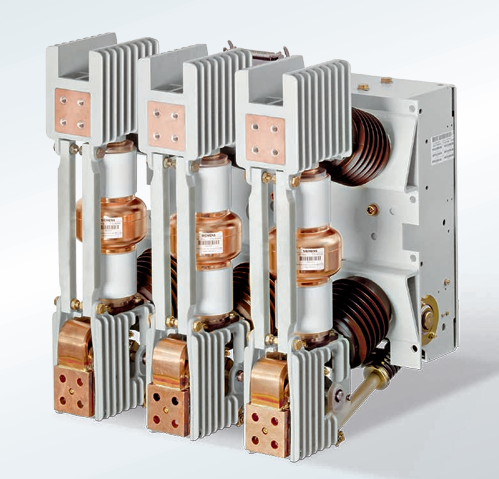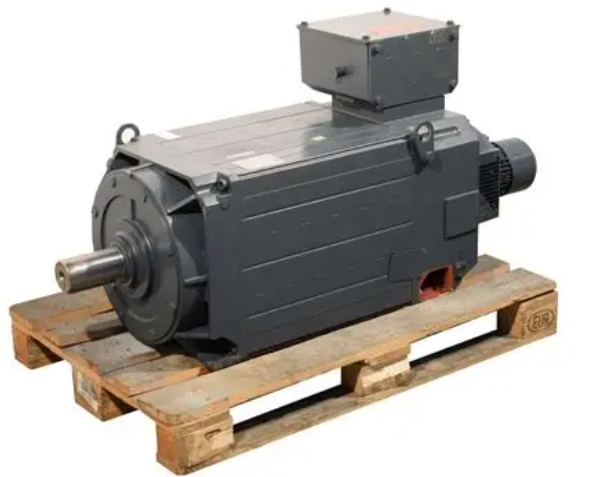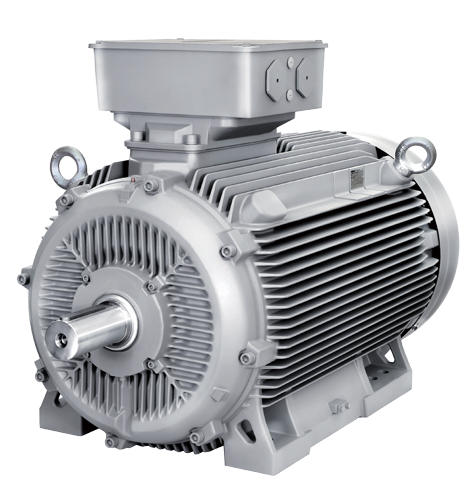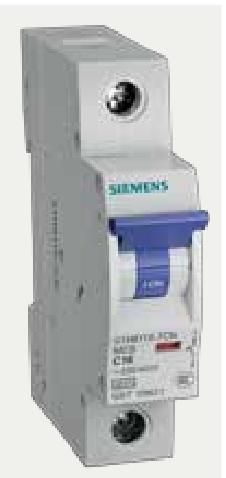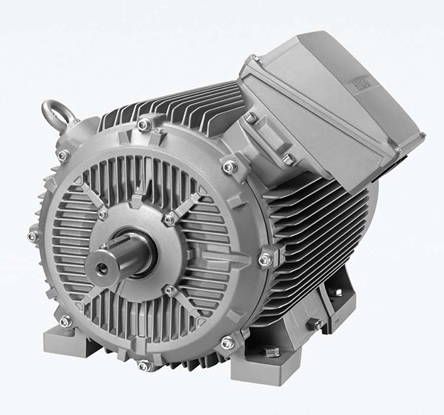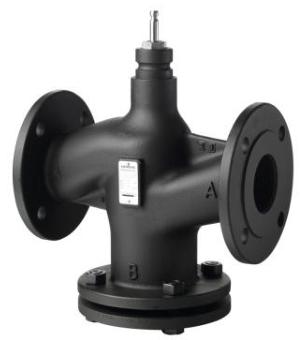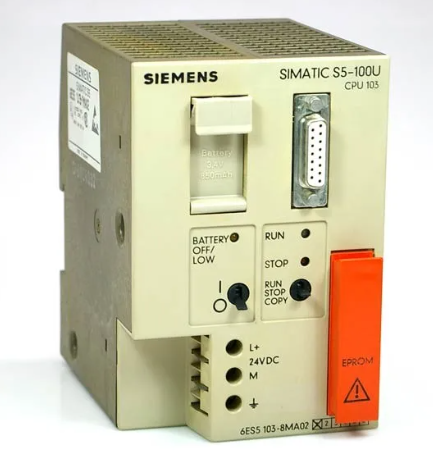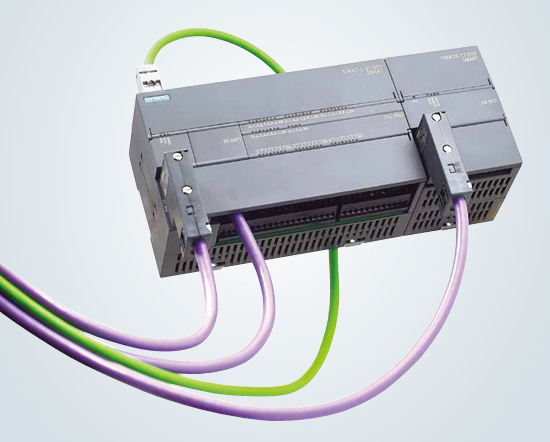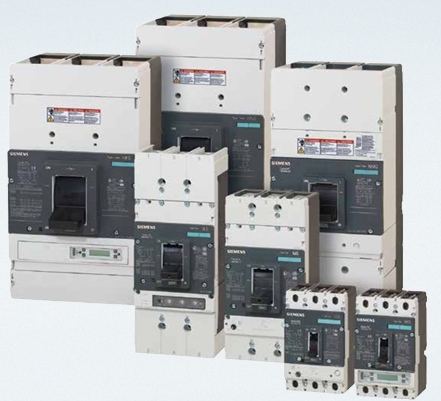IS215UCCCM04A adopts an integrated architecture of "embedded processor+dedicated control chip+cPCI bus controller", where each unit works together to achieve fast computation and efficient execution of control instructions
-Processing unit: Equipped with Intel embedded Core i5-6500TE processor, 4-core 4-thread design, with a main frequency of 2.3GHz and a maximum turbo frequency of 3.0GHz, it has a balance between low power consumption and high performance, supports real-time computation of complex control algorithms, and meets the parallel processing requirements of multitasking in industrial scenarios.
GE IS215UCCCM04A Compact PCI Controller Board
Product Core Architecture and Positioning
1. Core architecture composition
IS215UCCCM04A adopts an integrated architecture of "embedded processor+dedicated control chip+cPCI bus controller", where each unit works together to achieve fast computation and efficient execution of control instructions
-Processing unit: Equipped with Intel embedded Core i5-6500TE processor, 4-core 4-thread design, with a main frequency of 2.3GHz and a maximum turbo frequency of 3.0GHz, it has a balance between low power consumption and high performance, supports real-time computation of complex control algorithms, and meets the parallel processing requirements of multitasking in industrial scenarios.
-Storage unit: Integrated 8GB DDR4 2400MHz high-speed memory, supporting memory verification function to ensure the stability of data operation; Equipped with a 32GB mSATA interface solid-state drive, expandable up to 128GB, providing high-speed data storage and program loading capabilities.
-Bus control unit: Built in cPCI bus controller that complies with PICMG 2.0 specifications, supports 32-bit address/data bus, with a maximum bus transmission rate of 133MB/s, enabling high-speed data exchange with cPCI bus expansion modules.
-Control and Interface Unit: Integrated with digital I/O, analog acquisition, pulse output and other control interfaces, as well as Ethernet, serial port and other communication interfaces, it can directly connect to on-site sensors, actuators and upper level devices without the need for additional adapter modules.
2. Product positioning and core values
As the "control center" of industrial embedded control systems, IS215UCCCM04A mainly undertakes three core tasks: ① Real time control decision-making: collecting on-site equipment status signals, running PID regulation, logic interlocking and other control algorithms, and generating precise control instructions; ② Data exchange relay: Communicate with the expansion module through the cPCI bus, and interact with the upper monitoring system through interfaces such as Ethernet to achieve bidirectional data transmission; ③ System stability management: Built in fault diagnosis and redundant control logic to ensure stable operation of itself and associated equipment.
Its core value lies in breaking through the contradiction between "space limitations and performance requirements" with a compact structure, providing computing and control capabilities comparable to standard controllers in narrow installation spaces such as industrial control cabinets and vehicle control units. At the same time, with industrial grade reliability design, it reduces the risk of failure in complex environments and provides cost-effective solutions for small and medium-sized control scenarios.
Core functions and technical features
1. Precise real-time control capability
This controller board relies on embedded processors and dedicated control chips, with high response speed and real-time control capabilities, suitable for various industrial control scenarios:
-Multi type signal processing: Integrated with 16 digital inputs (DI), 16 digital outputs (DO), 8 analog inputs (AI, 4-20mA), and 4 analog outputs (AO, 4-20mA) interfaces, it can directly collect continuous signals such as temperature and pressure, as well as discrete signals such as equipment start stop status. The control accuracy reaches ± 0.1% FS, meeting high-precision control requirements.
-Fast control response: The control cycle can be as short as 0.1ms, supporting various industrial algorithms such as PID and fuzzy control. The algorithm parameters can be configured through software to adapt to the characteristics of different controlled objects, such as precise adjustment of motor speed and valve opening.
-Real time system support: Compatible with real-time operating systems such as VxWorks and RTX, combined with hardware interrupt mechanisms to ensure priority execution and fast response of control instructions, avoiding task scheduling delays in general systems.
2. Flexible cPCI bus expansion and communication
Based on the cPCI bus standard, this product has good scalability and multi device communication capabilities, suitable for system upgrades and complex scenario requirements:
-CPCI Bus Expansion: Supports cPCI 3U specification, with one cPCI expansion slot that can connect to I/O expansion modules, communication modules, etc. of the cPCI bus. If a digital I/O expansion board is added to achieve signal point expansion, the expansion process supports hot plugging without downtime, improving system maintainability.
-Multi protocol communication capability: Integrated with 2 Gigabit Ethernet interfaces (supporting Modbus TCP/IP and EtherNet/IP protocols), 4 RS485 serial ports (supporting Modbus RTU protocol), and 1 USB 3.0 interface, it can achieve seamless communication with upper monitoring systems (such as SCADA) and on-site intelligent devices (such as PLC and sensors), with a data transmission delay of ≤ 10ms.
-Bus redundancy design: Supports cPCI bus dual machine redundancy configuration, seamlessly switches between primary and backup controllers through bus arbitration mechanism, with a switching time of ≤ 50ms, to avoid system downtime caused by single point failures.
3. Industrial grade reliability design
In response to harsh conditions such as vibration, high and low temperatures, and electromagnetic interference in industrial sites, the product adopts a comprehensive reliability enhancement design:
-Wide environmental adaptability: working temperature range of -40 ℃~70 ℃, humidity range of 5%~95% (no condensation), stable operation in high altitude (≤ 3000m) environment, suitable for special scenarios such as outdoor control cabinets and vehicle control.
-Strong anti-interference performance: Complies with the IEC 61000-4 series electromagnetic compatibility standards, with electrostatic discharge immunity of ± 8kV (contact discharge) and ± 15kV (air discharge), and radio frequency radiation immunity of 20V/m. It can work normally in strong electromagnetic environments such as substations and metallurgical workshops.
-Hardware protection and redundancy: using a single power input (DC 24V), with overcurrent, overvoltage, and over temperature protection functions; The key circuit adopts a gold-plated contact design to enhance contact reliability; Support memory ECC verification to reduce data calculation errors.
-Reinforced structural design: Adopting 3U cPCI standard size, metal shell packaging, internal components fixed by shock-absorbing buckles, capable of withstanding 5g peak vibration (5-500Hz) and 20g peak impact (11ms), suitable for vibration scenarios such as rail transit and mobile devices.
4. Convenient software support and debugging
GE provides a comprehensive software ecosystem and debugging tools for the controller board, reducing the difficulty of system development and operation:
-Driver and Development Platform: Provides driver packages for operating systems such as VxWorks, Linux, and Windows Embedded, supporting plug and play hardware interfaces; Equipped with GE Proficy Machine Edition development platform, it integrates control algorithm library and graphical programming interface, allowing developers to quickly configure control logic.
-Remote management and debugging: Supports remote login, program download, and parameter configuration through Ethernet, integrates remote diagnostic tools, can monitor controller operation status in real time, collect fault logs, and reduce on-site operation and maintenance workload.
-Data recording and tracing: With real-time data recording function, it can store control parameters, equipment status, fault information and other data. The storage capacity supports expansion, and data will not be lost in case of power failure, making it easy to trace faults and optimize the system.
Key technical parameters
processor
Intel Core i5-6500TE, 4-core 4-thread, main frequency 2.3GHz, turbo frequency 3.0GHz
Low power embedded processor, balancing performance and energy consumption
memory
8GB DDR4 2400MHz, Support ECC verification, expandable up to 16GB maximum
Improve data computation stability and reduce errors
storage
32GB mSATA SSD, Supports expansion up to 128GB; 1 SATA 3.0 interface
High speed storage to meet program and data storage requirements
CPCI bus
Compliant with PICMG 2.0 specification, 32-bit bus, maximum transmission rate of 133MB/s
Support hot swappable and expansion module communication
control interface
16 channels DI (24V DC), 16 channels DO (24V DC, maximum current 2A); 8-channel AI (4-20mA), 4-channel AO (4-20mA)
Directly connect on-site sensors and actuators
communication interface
2 x Gigabit Ethernet (RJ45); 4 x RS485 serial port; 2×USB 3.0; 1×VGA
Support multi device communication and peripheral connection
working power supply
DC 24V ± 10%, maximum power consumption 45W
Industrial standard power supply, suitable for on-site power supply
working environment
Temperature -40 ℃~70 ℃; Humidity 5%~95% (no condensation); Altitude ≤ 3000m
Adapt to harsh industrial site environments
Anti-interference performance
Compliant with IEC 61000-4-2/3/4/6 standards
Electrostatic discharge ± 8kV, RF radiation immunity 20V/m
mechanical properties
Vibration: 5g peak (5-500Hz); Impact: 20g peak (11ms)
Reinforced design, resistant to vibration and impact
Size and Installation
3U cPCI standard size (100mm × 160mm), cPCI rack installation
Compliant with cPCI system installation standards, saving space
Applicable scenarios and application areas
IS215UCCCM04A, with its compact structure, high reliability, and flexible scalability, is widely used in small and medium-sized industrial control scenarios, especially suitable for control requirements with limited space:
1. Power equipment monitoring: Used as a local monitoring unit for transformers and switchgear, it collects parameters such as equipment temperature, voltage, and current, runs protection logic to achieve rapid response to overcurrent, overvoltage, and other faults, and uploads data to the power monitoring system through Ethernet to ensure safe operation of equipment.
2. In the field of rail transit: applied to subway station equipment monitoring (such as ventilation, water supply and drainage systems) or train auxiliary control systems, in the narrow space of onboard or platform control cabinets, to achieve equipment status collection and control instruction execution, adapting to the vibration and wide temperature environment of rail transit.
3. Industrial automation production line: As the control core of small and medium-sized production lines, such as food packaging lines and electronic component assembly lines, it controls the speed of conveyor belts, mechanical and manual operations, etc. It increases the number of I/O points through cPCI expansion modules to adapt to the flexible adjustment needs of production lines.
4. Petrochemical auxiliary system: used for controlling auxiliary equipment in chemical plants, such as start stop control and status monitoring of pumps and valves, collecting parameters such as medium pressure and flow rate, achieving interlocking control of equipment, and stable operation in explosion-proof control cabinets.
5. Medical equipment control: Adapt to the control requirements of small and medium-sized medical equipment (such as medical sterilizers and diagnostic instruments), accurately control equipment operating parameters, ensure stable operation of medical equipment through high reliability design, and avoid medical risks caused by malfunctions.

- User name Member Level Quantity Specification Purchase Date
- Satisfaction :
-









Email:wang@kongjiangauto.com

